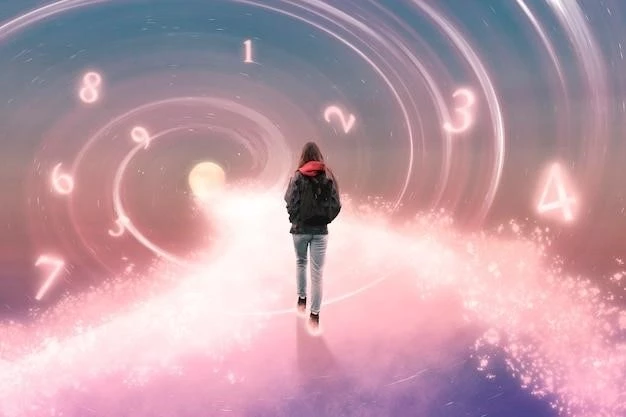Dreams, those enigmatic nocturnal narratives, have captivated the human imagination since the dawn of consciousness. These fleeting glimpses into subconscious realms, where logic bends and reality blurs, have sparked curiosity and fueled interpretations for millennia. Across cultures and throughout history, the quest to decipher the meaning behind these nighttime visions has led to a rich tapestry of beliefs, practices, and theories. This exploration delves into the fascinating history and evolution of dream interpretation, tracing its journey from ancient civilizations to modern psychology.
Ancient Roots: Dreams as Divine Messages and Portents
For our ancestors, the line between the dreaming world and waking reality was often porous. Dreams were imbued with spiritual significance, perceived as messages from the divine, interventions from the spirit world, or even glimpses into the future. In ancient Mesopotamia, dream interpreters held prominent positions in society, advising rulers based on the symbolism found in royal dreams. Similarly, the Egyptians meticulously documented their dreams, believing they offered guidance for navigating life’s complexities. These interpretations were often intertwined with religious beliefs, with gods and goddesses appearing in dreams to offer warnings, blessings, or instructions.
The ancient Greeks further developed the concept of dream incubation, where individuals would sleep in sacred temples dedicated to healing gods like Asclepius, hoping to receive divine guidance or cures for ailments through their dreams. These dream temples, often adorned with symbols and rituals designed to induce prophetic visions, highlight the deep reverence ancient societies held for the power of dreams.
From Mysticism to Science: Shifting Paradigms of Interpretation
As civilizations evolved, so too did their approaches to dream interpretation. While ancient cultures leaned heavily on the supernatural, the rise of philosophical thought in ancient Greece brought about new perspectives. Philosophers like Aristotle and Plato grappled with the nature of dreams, proposing theories that moved away from purely divine intervention. Aristotle, for instance, posited that dreams were a product of physiological processes, while Plato saw them as reflections of inner desires and conflicts.
The influence of these early thinkers reverberated through the ages, laying the groundwork for more secular interpretations of dreams. The Middle Ages, despite being steeped in religious dogma, saw the emergence of dream dictionaries and manuals that attempted to categorize and explain dream symbols in more pragmatic terms. While the Church maintained a cautious stance, often associating dreams with temptation or demonic influence, the human fascination with deciphering these nocturnal messages persisted.

The Birth of Psychoanalysis: Freud, Jung, and the Unconscious
The late 19th and early 20th centuries witnessed a seismic shift in dream interpretation with the advent of psychoanalysis. Pioneering figures like Sigmund Freud and Carl Jung revolutionized the way we understand dreams, shifting the focus from external forces to the depths of the human psyche. Freud, in his groundbreaking work “The Interpretation of Dreams,” posited that dreams are the “royal road to the unconscious,” expressing repressed desires, fears, and unresolved conflicts. He developed a complex system of dream analysis, focusing on symbolism, latent content, and the role of the unconscious mind in shaping our dreams.
Jung, while initially a follower of Freud, diverged from his mentor’s emphasis on sexuality, proposing instead the concept of the “collective unconscious.” He believed that dreams could tap into universal archetypes and symbols shared by all humans, offering insights into our shared evolutionary heritage. Jung’s work opened up new avenues for dream interpretation, emphasizing the spiritual and transpersonal aspects of these nocturnal experiences.
Cultural Perspectives: Dreams Across Continents and Traditions
While Western psychology has significantly influenced modern dream interpretation, it is crucial to recognize the vast diversity of beliefs and practices surrounding dreams across cultures. In many indigenous societies, dreams continue to play a vital role in spiritual practices, healing rituals, and decision-making. For example, among the Aboriginal Australians, the “Dreaming” is a complex concept that encompasses their creation myths, spiritual beliefs, and connection to the land. Dreams are seen as a way to access this ancestral wisdom and maintain harmony with the natural world.
In many African cultures, dreams are often seen as messages from ancestors or spirit guides, offering guidance, warnings, or blessings. Dream interpreters hold respected positions within these communities, helping to decipher the messages and provide counsel. Similarly, in many Asian cultures, dreams are intricately woven into religious and philosophical traditions. From the dream yoga practices of Tibetan Buddhism to the intricate dream symbolism found in Chinese culture, these traditions highlight the profound cultural variations in how dreams are understood and interpreted.
Modern Approaches: Neuroscience and the Evolving Understanding of Dreams
In recent decades, advancements in neuroscience and sleep research have provided new insights into the biological and neurological processes underlying dreaming. While the mystery of why we dream remains not fully understood, researchers have identified specific brain regions and neurochemicals associated with dream activity. Studies using brain imaging techniques like fMRI have shown that areas of the brain involved in emotions, memory, and sensory processing become particularly active during REM sleep, the stage in which vivid dreaming is most common.
These scientific advancements have led to new theories about the function of dreams. Some researchers propose that dreams play a role in memory consolidation, emotional regulation, or even threat simulation, helping us process and adapt to challenging experiences. While these findings offer valuable insights into the biological basis of dreaming, they do not diminish the profound subjective and cultural significance that dreams continue to hold for individuals and societies worldwide;

Conclusion: The Enduring Enigma of Dreams
From ancient myths to modern neuroscience, the quest to understand and interpret dreams has been a constant thread throughout human history. While scientific advancements have shed light on the biological mechanisms of dreaming, the subjective and personal nature of these nocturnal experiences ensures that they will likely remain a source of fascination and mystery for generations to come. Whether we view dreams as messages from the divine, expressions of our unconscious desires, or simply the brain’s way of processing information, there is no denying their profound impact on our waking lives. As we continue to explore the enigmatic realm of dreams, we open ourselves to a deeper understanding of the human mind, our shared history, and the boundless possibilities of the human experience.










